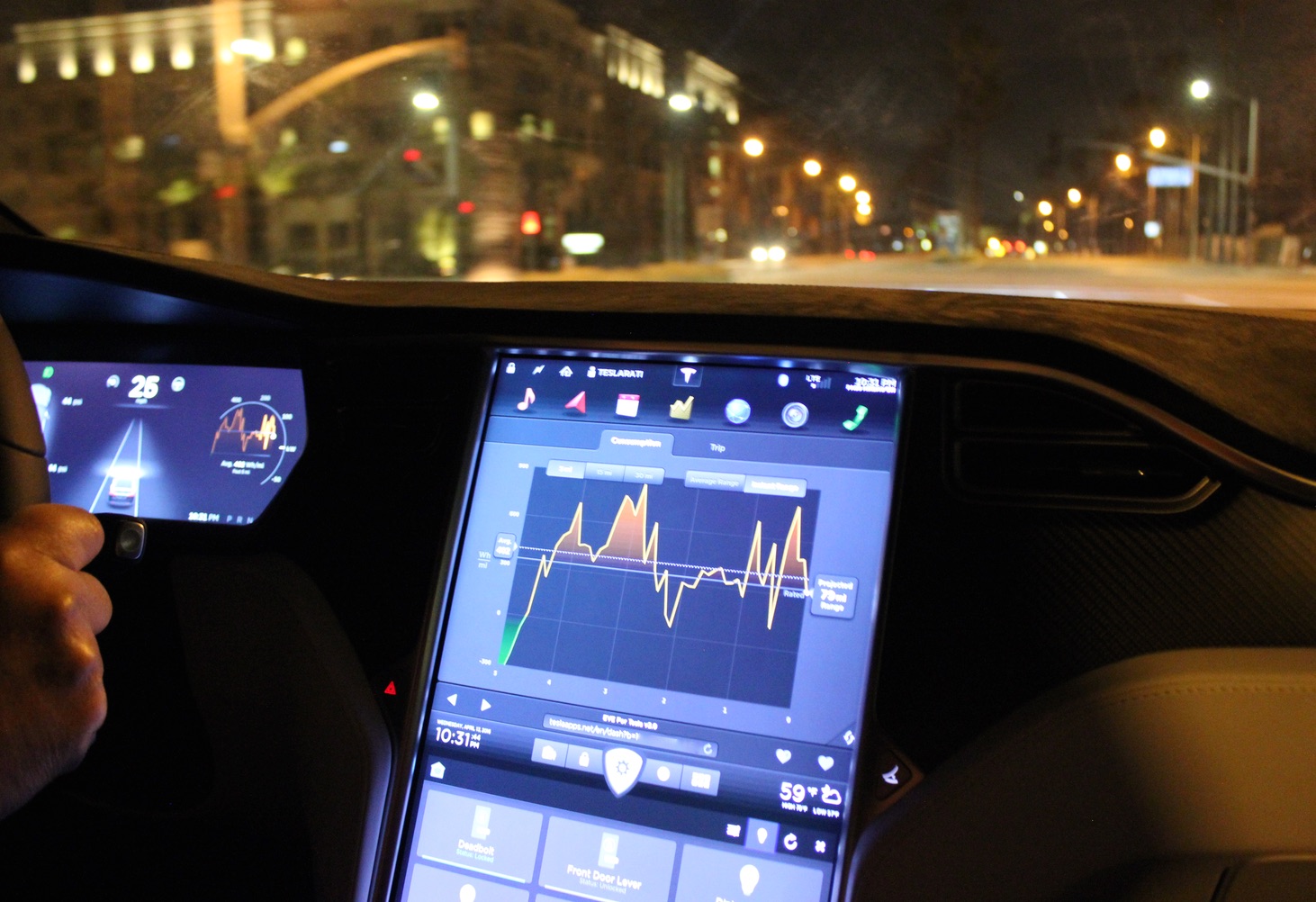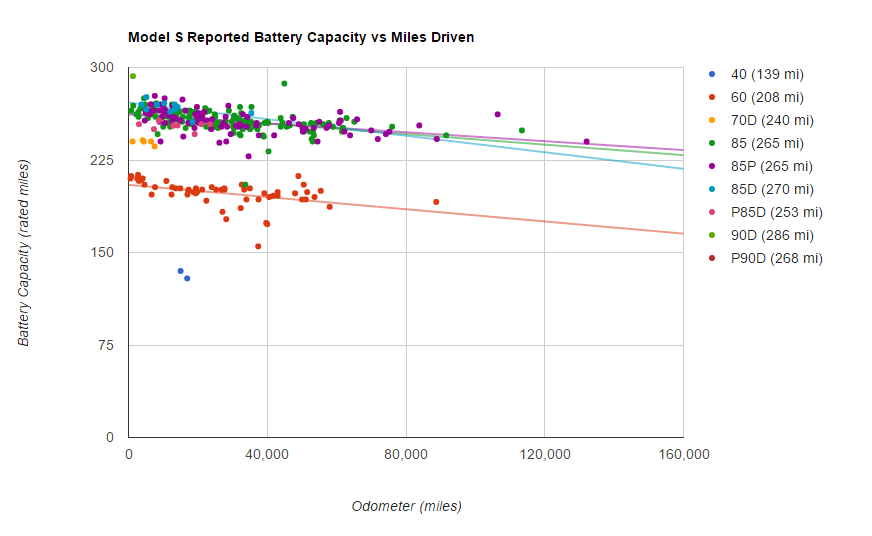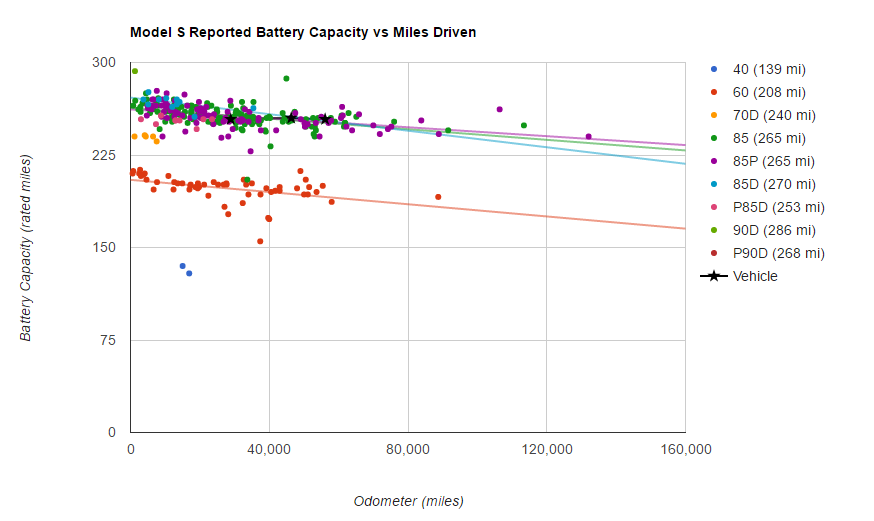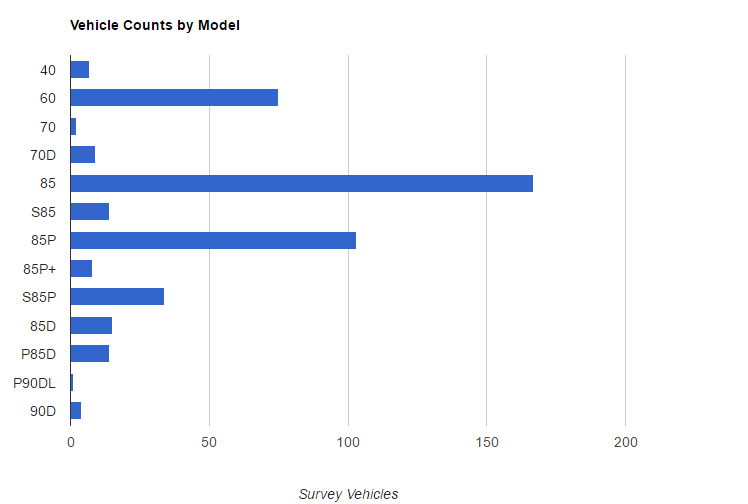News
Plug in America Extends Long-Term Tesla Battery Study to New Model S

Long-time electric vehicle (EV) advocate, Tesla Roadster owner, and Plug in America Chief Science Officer Tom Saxton has been conducting a long-term EV battery study with the goal to gather deep insight on how EV batteries perform (and degrade) over time.
Tom’s long-term battery study has been invaluable not only to the greater EV community but specifically to Tesla fans as well. The take rate for participants for the Tesla Roadster study is close to a 7% sample, while early 85 kWh Tesla Model S owners contributed to a healthy start. In an email correspondence with Tom, he has indicated that he is looking to expand the study to include the new 70 kWh and 90 kWh Model S variants as well as the Model X 90D.
With the EPA recently setting an unprecedented 303.2 mile Highway rating for the redesigned Model S, consumers may want to know what the long-term differences would be between a 90D classic fascia vs a 90D new fascia. Providing a third-party study of the effects of long-term battery health enables all concerned, especially amongst first time Tesla owners / Model 3 reservation holders, with a greater understanding and comfort to know “that Tesla knows what they’re doing.” Furthermore, it gives new EV drivers a sense of comfort when making the switch to electric powered car ownership.
Related:
- Tesla Roadster Battery Survey with Results
- Tesla Model S Battery Survey with Results
- DOWNLOAD (PDF) Plug in America Tesla Roadster Battery Study
Below are charts for the Model S as captured from Plug in America’s survey.
The first chart that caught my eye is one that plots battery range capacity vs. miles accumulated for that vehicle.
This same chart can be used to also track how a particular respondent’s vehicle matches with the universe of respondents. The vehicle in black on the chart below shows the performance of my vehicle in relation to other respondents’ cars.
The third chart that was of interest is the reliability of certain components, namely the drive unit, battery, and charger found on the Model S. I can’t help but wonder if the increase in reported failures on chargers for 2014 vehicles resulted in Tesla abandoning it for the current 48A charger found on newer Model S and Model X.
Lastly, the inspiration to my exhorting fellow owners to participate in this survey was the chart of participant vehicles.
For as many Model S’ are on the road today, I wonder as to the ability of this study in its current count, to fully report on the vehicle with such a small sample size. If you’re a new 70D or 90D Model S owner, please contribute your data to Plug in America through the Model S battery survey form. It’s fairly straight forward and serves our common purpose.
Tesla continues to improve in every sense, but it’s also wise to run a third party check against Tesla’s claimed figures.
Plug in America is an organization that formed out of the advocates that tried to stop the “murder”of the GM EV1 as told through the documentary, “Who Killed the Electric Car?”. According to the Plug in America site, they aim to accelerate the shift to plug-in vehicles powered by clean, affordable, domestic electricity to reduce our nation’s dependence on petroleum, improve air quality and reduce greenhouse gas emissions.

Elon Musk
SpaceX issues statement on Starship V3 Booster 18 anomaly
The incident unfolded during gas-system pressure testing at the company’s Massey facility in Starbase, Texas.

SpaceX has issued an initial statement about Starship Booster 18’s anomaly early Friday. The incident unfolded during gas-system pressure testing at the company’s Massey facility in Starbase, Texas.
SpaceX’s initial comment
As per SpaceX in a post on its official account on social media platform X, Booster 18 was undergoing gas system pressure tests when the anomaly happened. Despite the nature of the incident, the company emphasized that no propellant was loaded, no engines were installed, and personnel were kept at a safe distance from the booster, resulting in zero injuries.
“Booster 18 suffered an anomaly during gas system pressure testing that we were conducting in advance of structural proof testing. No propellant was on the vehicle, and engines were not yet installed. The teams need time to investigate before we are confident of the cause. No one was injured as we maintain a safe distance for personnel during this type of testing. The site remains clear and we are working plans to safely reenter the site,” SpaceX wrote in its post on X.
Incident and aftermath
Livestream footage from LabPadre showed Booster 18’s lower half crumpling around the liquid oxygen tank area at approximately 4:04 a.m. CT. Subsequent images posted by on-site observers revealed extensive deformation across the booster’s lower structure. Needless to say, spaceflight observers have noted that Booster 18 would likely be a complete loss due to its anomaly.
Booster 18 had rolled out only a day earlier and was one of the first vehicles in the Starship V3 program. The V3 series incorporates structural reinforcements and reliability upgrades intended to prepare Starship for rapid-reuse testing and eventual tower-catch operations. Elon Musk has been optimistic about Starship V3, previously noting on X that the spacecraft might be able to complete initial missions to Mars.
Investor's Corner
Tesla analyst maintains $500 PT, says FSD drives better than humans now
The team also met with Tesla leaders for more than an hour to discuss autonomy, chip development, and upcoming deployment plans.

Tesla (NASDAQ:TSLA) received fresh support from Piper Sandler this week after analysts toured the Fremont Factory and tested the company’s latest Full Self-Driving software. The firm reaffirmed its $500 price target, stating that FSD V14 delivered a notably smooth robotaxi demonstration and may already perform at levels comparable to, if not better than, average human drivers.
The team also met with Tesla leaders for more than an hour to discuss autonomy, chip development, and upcoming deployment plans.
Analysts highlight autonomy progress
During more than 75 minutes of focused discussions, analysts reportedly focused on FSD v14’s updates. Piper Sandler’s team pointed to meaningful strides in perception, object handling, and overall ride smoothness during the robotaxi demo.
The visit also included discussions on updates to Tesla’s in-house chip initiatives, its Optimus program, and the growth of the company’s battery storage business. Analysts noted that Tesla continues refining cost structures and capital expenditure expectations, which are key elements in future margin recovery, as noted in a Yahoo Finance report.
Analyst Alexander Potter noted that “we think FSD is a truly impressive product that is (probably) already better at driving than the average American.” This conclusion was strengthened by what he described as a “flawless robotaxi ride to the hotel.”
Street targets diverge on TSLA
While Piper Sandler stands by its $500 target, it is not the highest estimate on the Street. Wedbush, for one, has a $600 per share price target for TSLA stock.
Other institutions have also weighed in on TSLA stock as of late. HSBC reiterated a Reduce rating with a $131 target, citing a gap between earnings fundamentals and the company’s market value. By contrast, TD Cowen maintained a Buy rating and a $509 target, pointing to strong autonomous driving demonstrations in Austin and the pace of software-driven improvements.
Stifel analysts also lifted their price target for Tesla to $508 per share over the company’s ongoing robotaxi and FSD programs.
Elon Musk
SpaceX Starship Version 3 booster crumples in early testing
Photos of the incident’s aftermath suggest that Booster 18 will likely be retired.

SpaceX’s new Starship first-stage booster, Booster 18, suffered major damage early Friday during its first round of testing in Starbase, Texas, just one day after rolling out of the factory.
Based on videos of the incident, the lower section of the rocket booster appeared to crumple during a pressurization test. Photos of the incident’s aftermath suggest that Booster 18 will likely be retired.
Booster test failure
SpaceX began structural and propellant-system verification tests on Booster 18 Thursday night at the Massey’s Test Site, only a few miles from Starbase’s production facilities, as noted in an Ars Technica report. At 4:04 a.m. CT on Friday, a livestream from LabPadre Space captured the booster’s lower half experiencing a sudden destructive event around its liquid oxygen tank section. Post-incident images, shared on X by @StarshipGazer, showed notable deformation in the booster’s lower structure.
Neither SpaceX nor Elon Musk had commented as of Friday morning, but the vehicle’s condition suggests it is likely a complete loss. This is quite unfortunate, as Booster 18 is already part of the Starship V3 program, which includes design fixes and upgrades intended to improve reliability. While SpaceX maintains a rather rapid Starship production line in Starbase, Booster 18 was generally expected to validate the improvements implemented in the V3 program.
Tight deadlines
SpaceX needs Starship boosters and upper stages to begin demonstrating rapid reuse, tower catches, and early operational Starlink missions over the next two years. More critically, NASA’s Artemis program depends on an on-orbit refueling test in the second half of 2026, a requirement for the vehicle’s expected crewed lunar landing around 2028.
While SpaceX is known for diagnosing failures quickly and returning to testing at unmatched speed, losing the newest-generation booster at the very start of its campaign highlights the immense challenge involved in scaling Starship into a reliable, high-cadence launch system. SpaceX, however, is known for getting things done quickly, so it would not be a surprise if the company manages to figure out what happened to Booster 18 in the near future.













